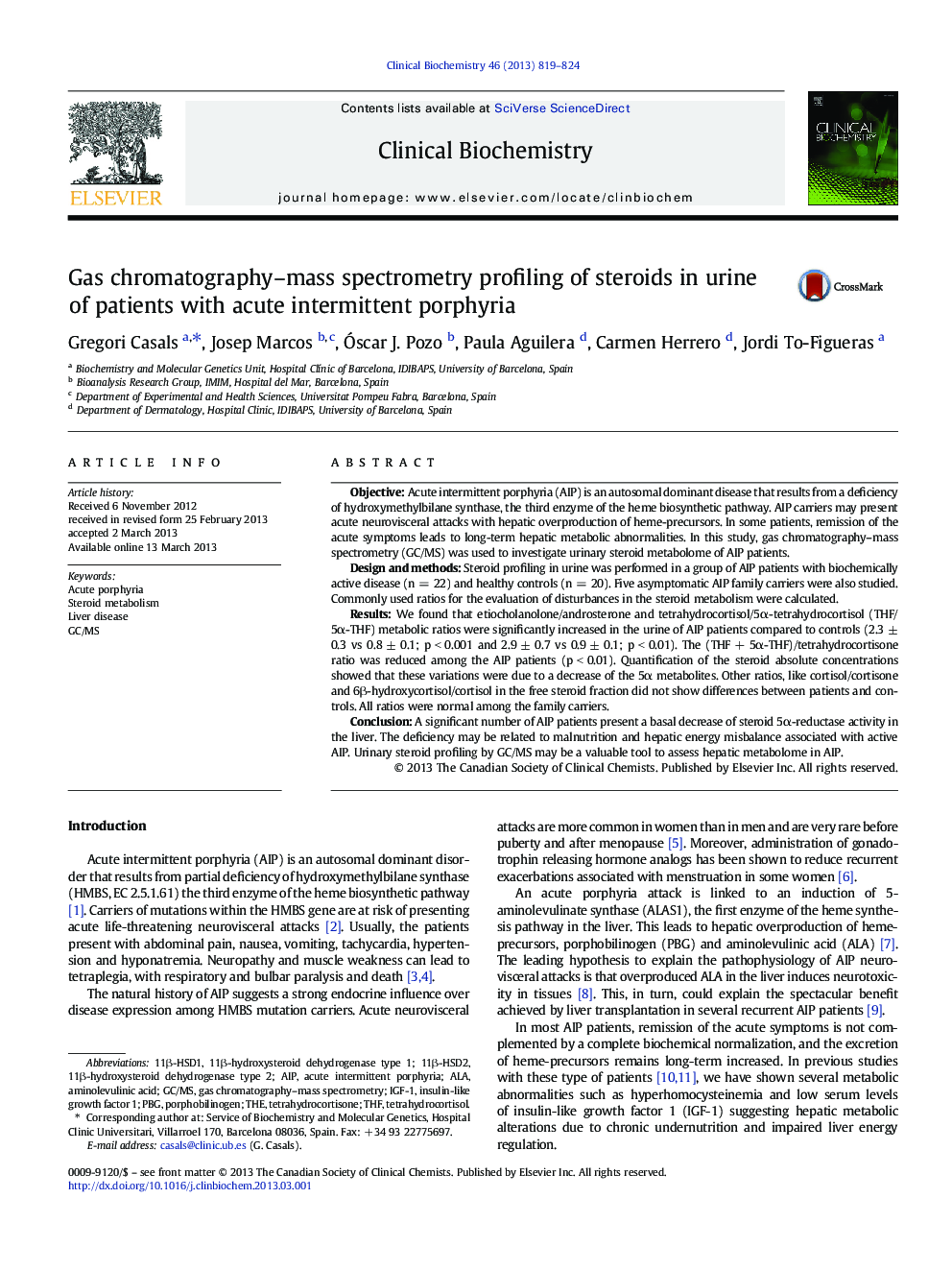| Article ID | Journal | Published Year | Pages | File Type |
|---|---|---|---|---|
| 1969420 | Clinical Biochemistry | 2013 | 6 Pages |
•GC/MS was used to study urinary steroid metabolome in acute intermittent porphyria.•Etiocholanolone/androsterone and THF/5α-THF ratios were increased in AIP patients.•These variations were due to a decrease of the 5α metabolites.•AIP decreases hepatic 5α-reductase activity, probably related to malnutrition.
ObjectiveAcute intermittent porphyria (AIP) is an autosomal dominant disease that results from a deficiency of hydroxymethylbilane synthase, the third enzyme of the heme biosynthetic pathway. AIP carriers may present acute neurovisceral attacks with hepatic overproduction of heme-precursors. In some patients, remission of the acute symptoms leads to long-term hepatic metabolic abnormalities. In this study, gas chromatography–mass spectrometry (GC/MS) was used to investigate urinary steroid metabolome of AIP patients.Design and methodsSteroid profiling in urine was performed in a group of AIP patients with biochemically active disease (n = 22) and healthy controls (n = 20). Five asymptomatic AIP family carriers were also studied. Commonly used ratios for the evaluation of disturbances in the steroid metabolism were calculated.ResultsWe found that etiocholanolone/androsterone and tetrahydrocortisol/5α-tetrahydrocortisol (THF/5α-THF) metabolic ratios were significantly increased in the urine of AIP patients compared to controls (2.3 ± 0.3 vs 0.8 ± 0.1; p < 0.001 and 2.9 ± 0.7 vs 0.9 ± 0.1; p < 0.01). The (THF + 5α-THF)/tetrahydrocortisone ratio was reduced among the AIP patients (p < 0.01). Quantification of the steroid absolute concentrations showed that these variations were due to a decrease of the 5α metabolites. Other ratios, like cortisol/cortisone and 6β-hydroxycortisol/cortisol in the free steroid fraction did not show differences between patients and controls. All ratios were normal among the family carriers.ConclusionA significant number of AIP patients present a basal decrease of steroid 5α-reductase activity in the liver. The deficiency may be related to malnutrition and hepatic energy misbalance associated with active AIP. Urinary steroid profiling by GC/MS may be a valuable tool to assess hepatic metabolome in AIP.
Graphical abstractFigure optionsDownload full-size imageDownload as PowerPoint slide
